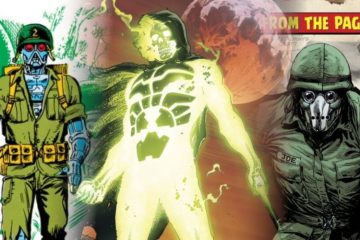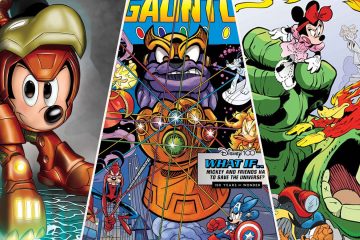The history of Valiant Comics is one of overcoming incredible odds, cataclysmic lows, and wondrous rebirths. A mainstay in the comics industry since its conception, Valiant has produced high-quality material and garnered some of the greatest accolades in the industry. To begin speaking of Valiant Comics’ origin, however, is to speak of one comics most divisive figures, a man who single-handedly raised Marvel Comics to new heights of success while also garnering copious amounts of disdain from his peers: Jim Shooter.As Marvel Comics’ ninth editor-in-chief, Jim Shooter brought a rigid structure to the company that helped raise it higher than ever before. Upon taking the position in January 1978, Shooter imposed strict new mandates on maintaining deadlines, editorial control over stories, and creators royalties based on the success of their characters. As the decade wore on, however, an exodus occurred within Marvel as many writers and artists left to work for DC Comics in protest of Shooter’s management. Despite creating company-wide crossover events such as 1982’s Contest of Champions and 1984’s Secret Wars, Shooter fell short with his radical 1986 New Universe line, which was an attempt to restart the Marvel Universe. On April 15th, 1987, Shooter was fired from Marvel Comics and launched Valiant Comics two years later.Valiant obtained the rights to three of publisher Gold Key’s classic comic characters: Solar, Man of the Atom; Turok, Son of Stone; and Magnus, Robot Fighter. Updated and altered to fit the new Valiant universe, Solar and Magnus set the stage for several other original Valiant characters to emerge. Rai, Harbinger, Shadowman, and X-O Manowar soon appeared to help populate the new universe while also starring in their own solo series. In 1992 Valiant launched its first crossover event entitled “Unity”, which further expanded its universe. Coming forth from the “Unity” event were series such as Bloodshot, Ninjak, and The Second Life of Dr. Mirage, among many others, that expanded Valiant’s horizons as the new publisher proved that it could not only breathe life into forgotten titles, but also create compelling and popular brand-new characters as well.
The history of Valiant Comics is one of overcoming incredible odds, cataclysmic lows, and wondrous rebirths. A mainstay in the comics industry since its conception, Valiant has produced high-quality material and garnered some of the greatest accolades in the industry. To begin speaking of Valiant Comics’ origin, however, is to speak of one comics most divisive figures, a man who single-handedly raised Marvel Comics to new heights of success while also garnering copious amounts of disdain from his peers: Jim Shooter.
As Marvel Comics’ ninth editor-in-chief, Jim Shooter brought a rigid structure to the company that helped raise it higher than ever before. Upon taking the position in January 1978, Shooter imposed strict new mandates on maintaining deadlines, editorial control over stories, and creators royalties based on the success of their characters. As the decade wore on, however, an exodus occurred within Marvel as many writers and artists left to work for DC Comics in protest of Shooter’s management. Despite creating company-wide crossover events such as 1982’s Contest of Champions and 1984’s Secret Wars, Shooter fell short with his radical 1986 New Universe line, which was an attempt to restart the Marvel Universe. On April 15th, 1987, Shooter was fired from Marvel Comics and launched Valiant Comics two years later.
Valiant obtained the rights to three of publisher Gold Key’s classic comic characters: Solar, Man of the Atom; Turok, Son of Stone; and Magnus, Robot Fighter. Updated and altered to fit the new Valiant universe, Solar and Magnus set the stage for several other original Valiant characters to emerge. Rai, Harbinger, Shadowman, and X-O Manowar soon appeared to help populate the new universe while also starring in their own solo series. In 1992 Valiant launched its first crossover event entitled “Unity”, which further expanded its universe. Coming forth from the “Unity” event were series such as Bloodshot, Ninjak, and The Second Life of Dr. Mirage, among many others, that expanded Valiant’s horizons as the new publisher proved that it could not only breathe life into forgotten titles, but also create compelling and popular brand-new characters as well.
#Rise #Fall #Rebirth #Valiant #Comics #Explained
Note:- (Not all news on the site expresses the point of view of the site, but we transmit this news automatically and translate it through programmatic technology on the site and not from a human editor. The content is auto-generated from a syndicated feed.))



